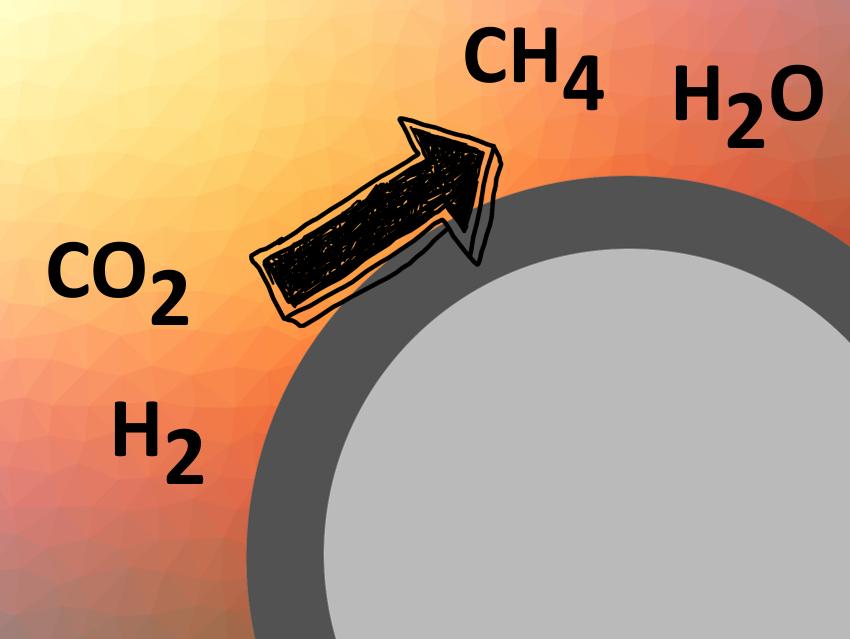Carbon dioxide is a greenhouse gas. Capturing and using it as a chemical feedstock would, thus, be environmentally friendly. One reaction that can be used for this is CO2 hydrogenation, which gives methane and water. The methane obtained from this reaction can, e.g., be used to store renewable energy. However, existing catalysts for this reaction require high temperatures (300–500 °C).
Patricia Concepción, Avelino Corma, Universitat Politècnica de València-Consejo Superior de Investigaciones Científicas (UPV-CSIC), Valencia, Spain, and colleagues have developed core-shell nanoparticles that can catalyze CO2 hydrogenation at comparatively low temperatures of 160–200 °C. The nanoparticles have a metallic ruthenium core and a ruthenium carbide shell and were prepared via a hydrothermal synthesis.
The catalyst activates both CO2 and H2. It provides 100 % selectivity for methane and does not produce carbon monoxide. The team attributes the high activity to active sites associated with the surface ruthenium-carbide species on the nanoparticles. These are not present in previously reported ruthenium catalysts for this reaction.
- Hydrothermal Synthesis of Ruthenium Nanoparticles with a Metallic Core and a Ruthenium Carbide Shell for Low-Temperature Activation of CO2 to Methane,
Jorge Cored, Andrea García-Ortiz, Sara Iborra, María J. Climent, Lichen Liu, Cheng-Hao Chuang, Ting-Shan Chan, Carlos Escudero, Patricia Concepción, Avelino Corma,
J. Am. Chem. Soc. 2019.
https://doi.org/10.1021/jacs.9b07088



